Young Academic Inventor's Award Recipients
2024
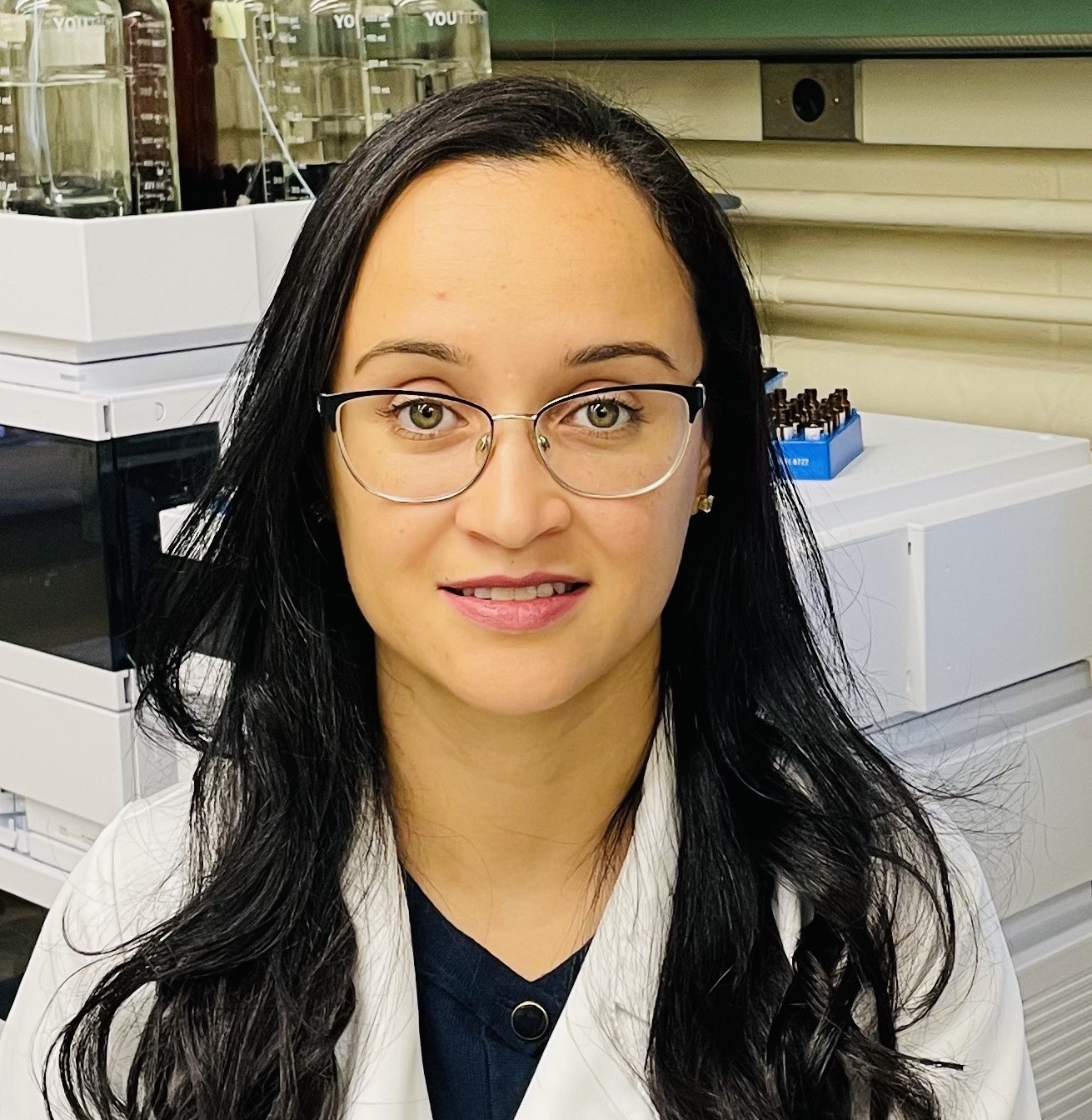 Dr. Pereira de Sa, (Ph.D. 2017, Microbiology, Federal University of Minas Gerais, Belo Horizonte, Brazil). “For her inventions directed to sterylglucosidase inhibitors as antifungal agents". Dr. Pereira de Sa is a Research Scientist in the Department of Microbiology and Immunology at Stony
Brook University Renaissance School of Medicine . Dr. Pereira de Sa leverages her
combined expertise in protein science and drug discovery to explore promising avenues
for future antifungal treatments. Her research delves into the structure of fungal
proteins, aiming to develop them as novel therapeutic targets to combat life-threatening
infections. Dr. Pereira de Sa has extensive experience in early drug discovery pipelines,
encompassing all stages from identifying and producing protein targets to in vitro
and in vivo validation. This dedication to public health drives her research towards
solutions for critical health needs. Her recent work involved the structural determination
and enzymatic characterization of a novel class of ß-glucosidases (sterylglucosidases).
This collaborative effort led to the identification of potent inhibitors, co-crystal
structures, and ultimately the design and production of significantly improved inhibitors
through medicinal chemistry and computational modeling.
Dr. Pereira de Sa, (Ph.D. 2017, Microbiology, Federal University of Minas Gerais, Belo Horizonte, Brazil). “For her inventions directed to sterylglucosidase inhibitors as antifungal agents". Dr. Pereira de Sa is a Research Scientist in the Department of Microbiology and Immunology at Stony
Brook University Renaissance School of Medicine . Dr. Pereira de Sa leverages her
combined expertise in protein science and drug discovery to explore promising avenues
for future antifungal treatments. Her research delves into the structure of fungal
proteins, aiming to develop them as novel therapeutic targets to combat life-threatening
infections. Dr. Pereira de Sa has extensive experience in early drug discovery pipelines,
encompassing all stages from identifying and producing protein targets to in vitro
and in vivo validation. This dedication to public health drives her research towards
solutions for critical health needs. Her recent work involved the structural determination
and enzymatic characterization of a novel class of ß-glucosidases (sterylglucosidases).
This collaborative effort led to the identification of potent inhibitors, co-crystal
structures, and ultimately the design and production of significantly improved inhibitors
through medicinal chemistry and computational modeling.
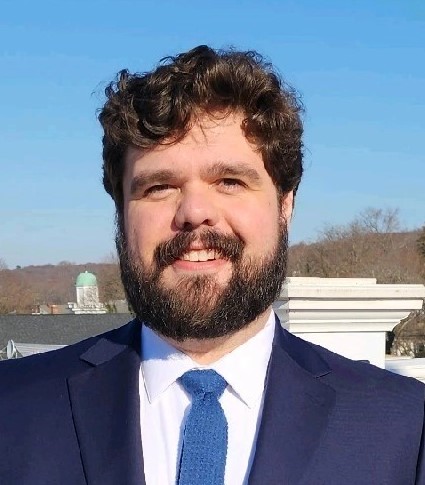 Brandon Kovarovic, (Ph.D. 2020, Biomedical Engineering, Stony Brook University). "For his inventions directed to artificial polymeric heart valves systems" . Dr. Kovaroic's doctoral research focused on evaluating commercial transcatheter heart valves with
industry standard testing and novel patient-specific simulations. His post-doctoral
research continued this academic research as well as an expansion to design, optimize,
fabricate, and evaluate a novel polymeric transcatheter heart valve. Polymeric heart
valve technology has been rapidly expanding in both academic and industry research
and development because new polymeric materials serve to address the fundamental flaws
of the current commercial tissue-based valves that limit patient safety and device
durability. Dr. Kovarovic's research has demonstrated that this polymeric technology
resists blood platelet clotting thus reducing stroke risk for the patient, resists
fatigue damage and remains functional to up to 25 years in a patient. Additionally,
polymeric material offers design flexibility allowing for the fabrication of an optimized
design for improved performance and tailored designs for underserved patient anatomies.
He has a patent issued as part of his doctoral research with a collaborating company,
Mentice AB (US11682320B2), with which he helped design a cardiovascular simulator
for device testing. The other 3 disclosures and 6 patent applications were directly
related to his post-doctoral research. IPR 22 073 focused on claims on the design
of non-uniform valve leaflets for increase device performance as well as the novel
casting technology of sutureless molding for rapid manufacture of heart valves. IPR
23 011 expanded this technology to address bicuspid aortic valve patients, which his
polymeric valve technology serves to create an unmet optimal device for this unique
and challenging anatomy. Finally, IPR 24 020 further expanded this polymeric technology
to address future heart valve designs on the venous and right-side of the heart. Dr.
Kovarovic is currently a Senior Product Development Engineer at Abiomed, (a division of J&J Medtech).
Brandon Kovarovic, (Ph.D. 2020, Biomedical Engineering, Stony Brook University). "For his inventions directed to artificial polymeric heart valves systems" . Dr. Kovaroic's doctoral research focused on evaluating commercial transcatheter heart valves with
industry standard testing and novel patient-specific simulations. His post-doctoral
research continued this academic research as well as an expansion to design, optimize,
fabricate, and evaluate a novel polymeric transcatheter heart valve. Polymeric heart
valve technology has been rapidly expanding in both academic and industry research
and development because new polymeric materials serve to address the fundamental flaws
of the current commercial tissue-based valves that limit patient safety and device
durability. Dr. Kovarovic's research has demonstrated that this polymeric technology
resists blood platelet clotting thus reducing stroke risk for the patient, resists
fatigue damage and remains functional to up to 25 years in a patient. Additionally,
polymeric material offers design flexibility allowing for the fabrication of an optimized
design for improved performance and tailored designs for underserved patient anatomies.
He has a patent issued as part of his doctoral research with a collaborating company,
Mentice AB (US11682320B2), with which he helped design a cardiovascular simulator
for device testing. The other 3 disclosures and 6 patent applications were directly
related to his post-doctoral research. IPR 22 073 focused on claims on the design
of non-uniform valve leaflets for increase device performance as well as the novel
casting technology of sutureless molding for rapid manufacture of heart valves. IPR
23 011 expanded this technology to address bicuspid aortic valve patients, which his
polymeric valve technology serves to create an unmet optimal device for this unique
and challenging anatomy. Finally, IPR 24 020 further expanded this polymeric technology
to address future heart valve designs on the venous and right-side of the heart. Dr.
Kovarovic is currently a Senior Product Development Engineer at Abiomed, (a division of J&J Medtech).
2023
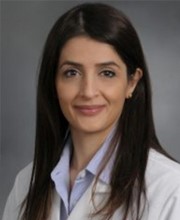 Dr. Sima Mofakam, (Ph.D. 2016, Biophysics, University of Michigan). “For her inventions of an automated method to measure the level of consciousness, as
well as on the neuromodulatory approaches to restore consciousness in brain injury
patients”. Dr. Mofakam is currently an Assistant Professor in the Department of Neurosurgery
at Stony Brook Ranaissance School of Medicine. He reserach focuses in elucidating
the interplay of structure, dynamics and function in the brain’s neural networks.
Her physics and computational background, and her clinical translational research
in is a unique combination that helps her creative mind to create simple solutions
for hard problems that we deal with in the clinical realm every day. One of Dr. Mofakam's
products is developing an automated way to measure the level of consciousness in
comatose patients. This is a unique tool that could potentially change the field and
help doctors to better manage these patients and predict the recovery. Dr. Mofakham,
along with Dr.Mikell (neurosurgeon), is currently working on a difficult project:
utilizing neuromodulatory approaches to restore consciousness in brain injury patients.
They are pursuing a line of research using complicated mathematical calculations
and electrical stimulation to restore brain function in brain injury patients when
it is lost.
Dr. Sima Mofakam, (Ph.D. 2016, Biophysics, University of Michigan). “For her inventions of an automated method to measure the level of consciousness, as
well as on the neuromodulatory approaches to restore consciousness in brain injury
patients”. Dr. Mofakam is currently an Assistant Professor in the Department of Neurosurgery
at Stony Brook Ranaissance School of Medicine. He reserach focuses in elucidating
the interplay of structure, dynamics and function in the brain’s neural networks.
Her physics and computational background, and her clinical translational research
in is a unique combination that helps her creative mind to create simple solutions
for hard problems that we deal with in the clinical realm every day. One of Dr. Mofakam's
products is developing an automated way to measure the level of consciousness in
comatose patients. This is a unique tool that could potentially change the field and
help doctors to better manage these patients and predict the recovery. Dr. Mofakham,
along with Dr.Mikell (neurosurgeon), is currently working on a difficult project:
utilizing neuromodulatory approaches to restore consciousness in brain injury patients.
They are pursuing a line of research using complicated mathematical calculations
and electrical stimulation to restore brain function in brain injury patients when
it is lost.
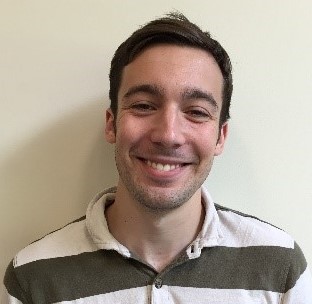 Dr. Jann Stavro, (Ph.D. 2020, Biomedical Engineering, Stony Brook University). “For his inventions on the development of novel amorphous selenium sensors for medical
imaging applications”. Dr. Stavro is currently a Medical Physics Resident in the Department of Radiology
at Stony Brook Renaissance School of Medicine. He is also the Radiation Safety Officer
of Stony Brook Southampton Hospital. During his PhD graduate work and medical physics
career he has focused his research interest in the development of novel detector technologies
for medical imaging applications, including: (1) The experimental and simulation based
characterization of novel amorphous Selenium based photon counting detectors for breast
imaging applications; (2) development and characterization of the first application
of colloidal quantum dot based blocking layers for amorphous Selenium avalanche detectors;
(3) characterization of selenium based sensors for PET applications; (4) Simulation
of novel blocking layers for avalanche amorphous selenium sensors and (v) experimental
characterization of CMOS ASICS coupled to amorphous Selenium sensors. Dr. Stavro
is currently a Medical physicist and is specializing in Diagnostic Radiology and Nuclear
Medicine at Stony Brook University Hospital. He is also actively involved in research
and is working on the development of novel detectors for digital radiography and nuclear
medicine applications.
Dr. Jann Stavro, (Ph.D. 2020, Biomedical Engineering, Stony Brook University). “For his inventions on the development of novel amorphous selenium sensors for medical
imaging applications”. Dr. Stavro is currently a Medical Physics Resident in the Department of Radiology
at Stony Brook Renaissance School of Medicine. He is also the Radiation Safety Officer
of Stony Brook Southampton Hospital. During his PhD graduate work and medical physics
career he has focused his research interest in the development of novel detector technologies
for medical imaging applications, including: (1) The experimental and simulation based
characterization of novel amorphous Selenium based photon counting detectors for breast
imaging applications; (2) development and characterization of the first application
of colloidal quantum dot based blocking layers for amorphous Selenium avalanche detectors;
(3) characterization of selenium based sensors for PET applications; (4) Simulation
of novel blocking layers for avalanche amorphous selenium sensors and (v) experimental
characterization of CMOS ASICS coupled to amorphous Selenium sensors. Dr. Stavro
is currently a Medical physicist and is specializing in Diagnostic Radiology and Nuclear
Medicine at Stony Brook University Hospital. He is also actively involved in research
and is working on the development of novel detectors for digital radiography and nuclear
medicine applications.
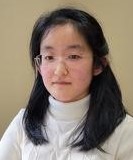 Dr. Yifan Zhou, (Ph.D. 2019, Electrical Engineering, Tsinghua University). “For her inventions on the development of a series of quantum computing algorithms
that can be successfully implemented on today’s quantum computers to solve large scale
power system problems”. Dr. Zhou is currently an Assistant Professor in the Department of Computer Engineering
at Stony Brook University. She has been an important contributor to two strategic
areas: AI-enabled smart grid and quantum-engineered resilient power grids (Quantum
Grids). Dr. Zhou has been the first one in the world to develope a series of quantum
computing algorithms that can be successfully implemented on today’s quantum computers
(e.g. IBM Q machines) to solve large scale power system problems. Her works have
helped Stony Brook University establish the global leadership in quantum-energy research,
and have impressed the entire power engineering community. Dr. Zhou's contributions
also extend to AI and its deployment in power industry. She has been the first one
that introduced new technologies such as ODE-NET and physical-inspired machine learning
to enable a true smart grid. Especially, one of her new AI algorithms has recently
been adopted by the Independent System Operator New England (ISO NE) for operating
New England’s bulk power grids in six states.
Dr. Yifan Zhou, (Ph.D. 2019, Electrical Engineering, Tsinghua University). “For her inventions on the development of a series of quantum computing algorithms
that can be successfully implemented on today’s quantum computers to solve large scale
power system problems”. Dr. Zhou is currently an Assistant Professor in the Department of Computer Engineering
at Stony Brook University. She has been an important contributor to two strategic
areas: AI-enabled smart grid and quantum-engineered resilient power grids (Quantum
Grids). Dr. Zhou has been the first one in the world to develope a series of quantum
computing algorithms that can be successfully implemented on today’s quantum computers
(e.g. IBM Q machines) to solve large scale power system problems. Her works have
helped Stony Brook University establish the global leadership in quantum-energy research,
and have impressed the entire power engineering community. Dr. Zhou's contributions
also extend to AI and its deployment in power industry. She has been the first one
that introduced new technologies such as ODE-NET and physical-inspired machine learning
to enable a true smart grid. Especially, one of her new AI algorithms has recently
been adopted by the Independent System Operator New England (ISO NE) for operating
New England’s bulk power grids in six states.
2022
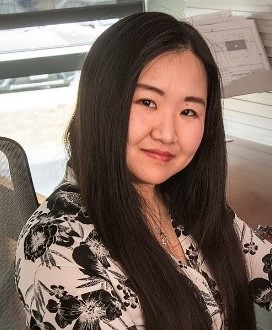 Dr. Lei Wang, (Ph.D. 2016, Chemistry, Stony Brook University). “For her numerous inventions in the field of energy storage and the implementation
of renewable energy”. Dr. Wang is currently Associate Scientist at Brookhaven National Laboratory. Her
research is focused on energy storage, specifically in relation to novel renewable
energy storage technologies. The significance of her research is that large scale
storage must be low cost, environmentlly friendly, scalable and have long life. Dr.
Lei's approach uses alternative material methods that eliminate the need for precious
metals, thus substantially reducing the cost of the batteries. Her results have been
showing promise and the successful outcome of her research will enable commercialization
of the technology and more widespread adoption of renewable energy into the electric
grid. Dr. Wang has made innovative and impactful contributions to materials, electrode,
and cell design targeting implementation for large scale energy storage.
Dr. Lei Wang, (Ph.D. 2016, Chemistry, Stony Brook University). “For her numerous inventions in the field of energy storage and the implementation
of renewable energy”. Dr. Wang is currently Associate Scientist at Brookhaven National Laboratory. Her
research is focused on energy storage, specifically in relation to novel renewable
energy storage technologies. The significance of her research is that large scale
storage must be low cost, environmentlly friendly, scalable and have long life. Dr.
Lei's approach uses alternative material methods that eliminate the need for precious
metals, thus substantially reducing the cost of the batteries. Her results have been
showing promise and the successful outcome of her research will enable commercialization
of the technology and more widespread adoption of renewable energy into the electric
grid. Dr. Wang has made innovative and impactful contributions to materials, electrode,
and cell design targeting implementation for large scale energy storage.
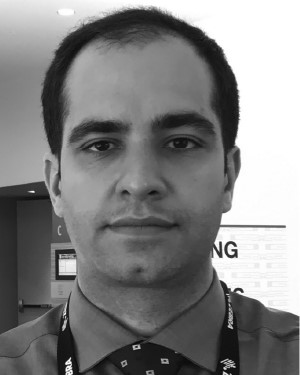 Dr. Yasha Karimi, (Ph.D. 2019, Electrical and Computer Engineering, Stony Brook University). “For his ultra-low power inventions in the areas of internet-of-things and medical
devices”. Dr. Karimi is currently a Staff Analog/mixed-mode IC design Engineer, at Lota Biosciences in Alameda, California.
Dr. Karimi is an expert in the field of Electrical and Electronics Engineering specifically
in the area of medical devices. He has led and participated in serveral research
projects including the design of passive radio frequency (RF) tags and backscattering
tag-to-tag networks. He developed a novel method for activity recognition using passive devices that use radio frequency
channel information to dected a person's activity or presence. He also co-invented
a technique that enables these tags to sense activities and interactions among various
entities in the environment around them aed on the changes in the tag-to-tag wireless
channel. These tags then form autonomous networks among themselves and proide an
unprecedented level of distributed intelligence enabling applications such as precise
localization, fine grain tracking of human movements, activity and gesture recognition
and human-object interactions. Dr. Karimi designed and implemented the fundamental
component of this network.
Dr. Yasha Karimi, (Ph.D. 2019, Electrical and Computer Engineering, Stony Brook University). “For his ultra-low power inventions in the areas of internet-of-things and medical
devices”. Dr. Karimi is currently a Staff Analog/mixed-mode IC design Engineer, at Lota Biosciences in Alameda, California.
Dr. Karimi is an expert in the field of Electrical and Electronics Engineering specifically
in the area of medical devices. He has led and participated in serveral research
projects including the design of passive radio frequency (RF) tags and backscattering
tag-to-tag networks. He developed a novel method for activity recognition using passive devices that use radio frequency
channel information to dected a person's activity or presence. He also co-invented
a technique that enables these tags to sense activities and interactions among various
entities in the environment around them aed on the changes in the tag-to-tag wireless
channel. These tags then form autonomous networks among themselves and proide an
unprecedented level of distributed intelligence enabling applications such as precise
localization, fine grain tracking of human movements, activity and gesture recognition
and human-object interactions. Dr. Karimi designed and implemented the fundamental
component of this network.
2021
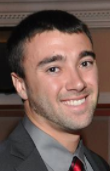 Dr. Andy LaBella, (Ph.D. 2020, Biomedical Engineering, Stony Brook University). “For his invention of a state-of-the-art PET detector module”. Dr. Labella is currently an Imaging Physics Resident at Boston Children’s Hospital
and a Postdoctoral Researcher in the Department of Radiology at Stony Brook University
School of Medicine. Dr. LaBella is working on the development and fabrication of medical
imaging detectors for positron emission tomography (PET) in the Novel Medical Imaging
Technologies (NMIT) lab under Dr. Amir Goldan. He received his B.Eng. in biomedical
engineering and physics from Stony Brook University in 2016 and M.S. in biomedical
engineering in 2018 and Ph.D. in biomedical engineering with a specialty in medical
physics in 2020 from Stony Brook University. Dr. LaBella developed Prism-PET, a cost-effective,
high resolution PET detector module aimed at bringing organ-specific and total-body
PET imaging to the clinical environment.
Dr. Andy LaBella, (Ph.D. 2020, Biomedical Engineering, Stony Brook University). “For his invention of a state-of-the-art PET detector module”. Dr. Labella is currently an Imaging Physics Resident at Boston Children’s Hospital
and a Postdoctoral Researcher in the Department of Radiology at Stony Brook University
School of Medicine. Dr. LaBella is working on the development and fabrication of medical
imaging detectors for positron emission tomography (PET) in the Novel Medical Imaging
Technologies (NMIT) lab under Dr. Amir Goldan. He received his B.Eng. in biomedical
engineering and physics from Stony Brook University in 2016 and M.S. in biomedical
engineering in 2018 and Ph.D. in biomedical engineering with a specialty in medical
physics in 2020 from Stony Brook University. Dr. LaBella developed Prism-PET, a cost-effective,
high resolution PET detector module aimed at bringing organ-specific and total-body
PET imaging to the clinical environment.
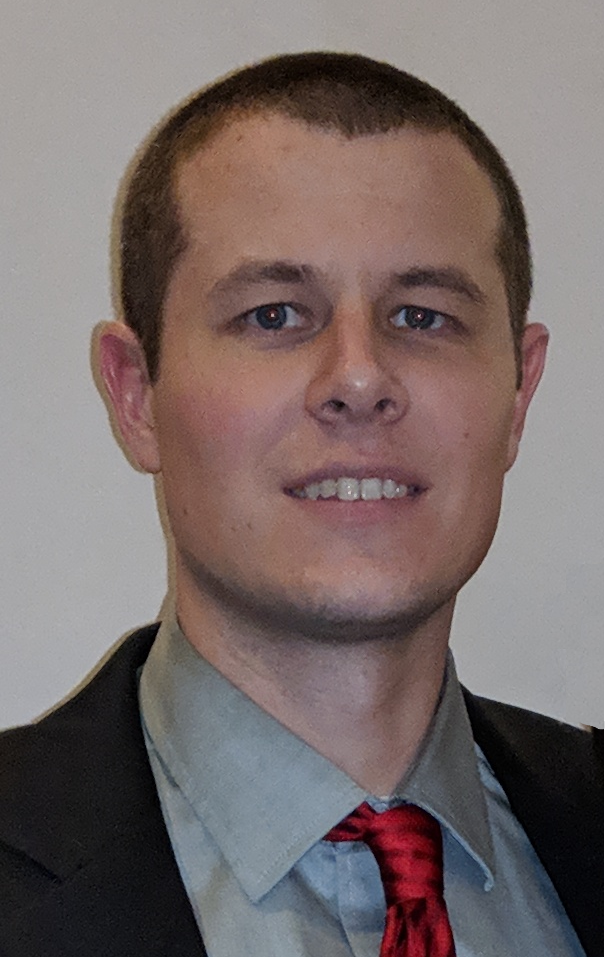 Dr. Andrew Fesler, (Ph.D.2018, Molecular and Cellular Biology, Stony Brook University Renaissance School of
Medicine). "For his invention of microRNA based cancer medicine platform technology". Dr. Fesler is a Senior Scientist at Curamir Therapeutics Inc. He received his B.S.
in biology from Manhattan College in 2011. He received his Ph.D. in Molecular and
Cellular Biology from Stony Brook University in 2018, working in the lab of Dr. Jingfang
Ju in the Pathology Department. His research is focused on understanding the role
of miRNA in cancer as well as the potential of miRNAs as therapeutics. Working with
Dr. Ju, he developed a 5-FU modified miRNA with enhanced therapeutic effects. This
modification is a platform technology that can be applied to various different miRNAs
in several cancer types. Curamir Therapeutics licensed this technology in 2019 and
Dr. Fesler joined the company in 2020 to continue working on the development of these
modified miRNA therapeutics.
Dr. Andrew Fesler, (Ph.D.2018, Molecular and Cellular Biology, Stony Brook University Renaissance School of
Medicine). "For his invention of microRNA based cancer medicine platform technology". Dr. Fesler is a Senior Scientist at Curamir Therapeutics Inc. He received his B.S.
in biology from Manhattan College in 2011. He received his Ph.D. in Molecular and
Cellular Biology from Stony Brook University in 2018, working in the lab of Dr. Jingfang
Ju in the Pathology Department. His research is focused on understanding the role
of miRNA in cancer as well as the potential of miRNAs as therapeutics. Working with
Dr. Ju, he developed a 5-FU modified miRNA with enhanced therapeutic effects. This
modification is a platform technology that can be applied to various different miRNAs
in several cancer types. Curamir Therapeutics licensed this technology in 2019 and
Dr. Fesler joined the company in 2020 to continue working on the development of these
modified miRNA therapeutics.
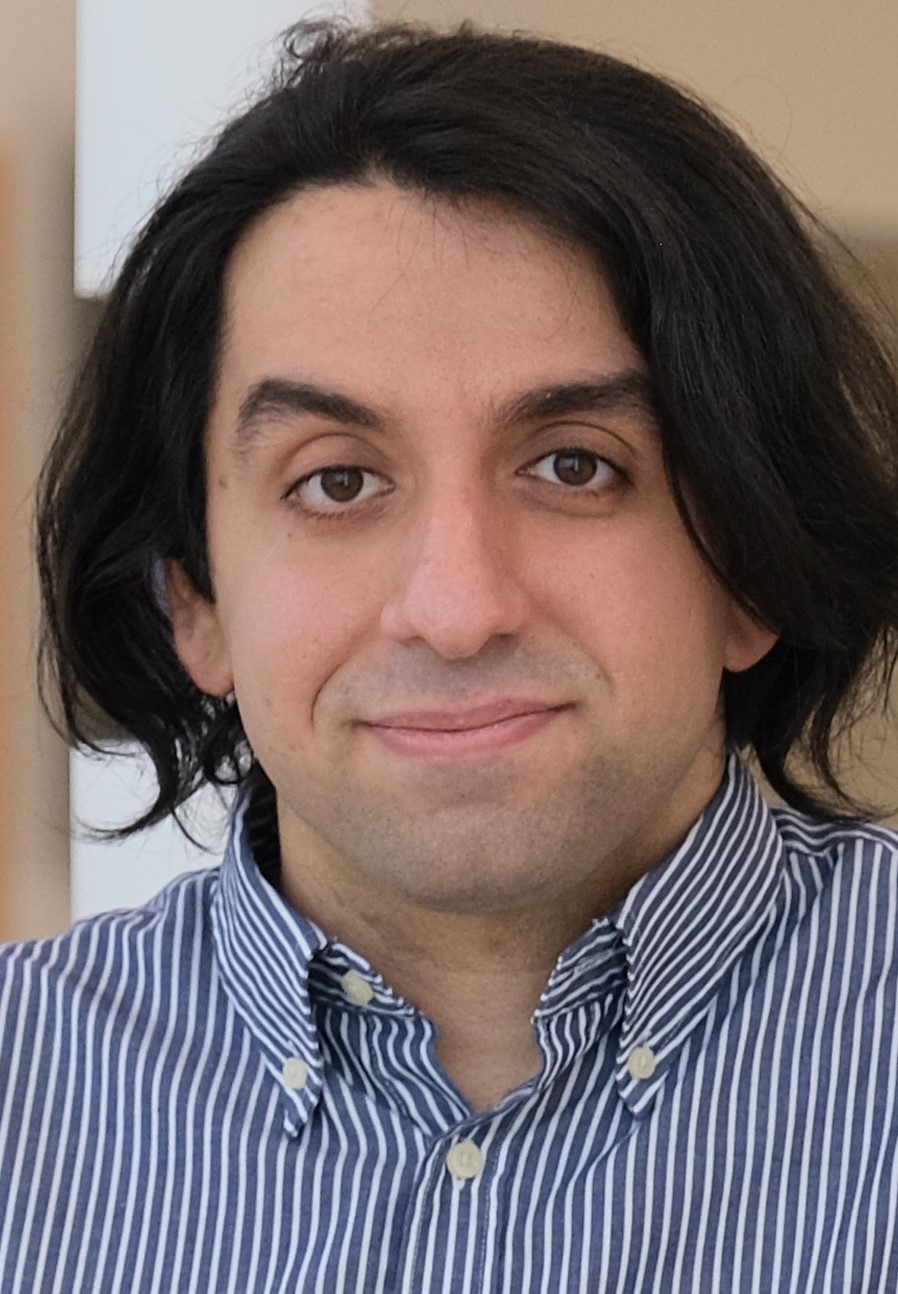 Dr. SinaRashidian, (Ph.D. 2020, Computer Science, Stony Brook University). “For his inventions of software for gaze tracking and geocoding healthcare data”.
Dr. Rashidian is currently a Data Scientist at Verily Life Sciences. He received his
B.Sc in computer engineering from Sharif University of Technology, Teheran, Iran in
2015 and Ph.D in computer science from Stony Brook University in 2020. He joined Harvard
Medical School/Mass General Hospital after graduation as a researcher. Dr. Rashidian’s
passion is to advance artificial intelligence in healthcare using cutting-edge technology.
His efforts led to designing a novel eye gaze-based application running on the iOS
operating system which helps patients with severe physical conditions communicate
and improves their quality of lives. He also developed a new data-driven approach
to geocode healthcare data compatible with HIPAA regulations.
Dr. SinaRashidian, (Ph.D. 2020, Computer Science, Stony Brook University). “For his inventions of software for gaze tracking and geocoding healthcare data”.
Dr. Rashidian is currently a Data Scientist at Verily Life Sciences. He received his
B.Sc in computer engineering from Sharif University of Technology, Teheran, Iran in
2015 and Ph.D in computer science from Stony Brook University in 2020. He joined Harvard
Medical School/Mass General Hospital after graduation as a researcher. Dr. Rashidian’s
passion is to advance artificial intelligence in healthcare using cutting-edge technology.
His efforts led to designing a novel eye gaze-based application running on the iOS
operating system which helps patients with severe physical conditions communicate
and improves their quality of lives. He also developed a new data-driven approach
to geocode healthcare data compatible with HIPAA regulations.
2020
- A
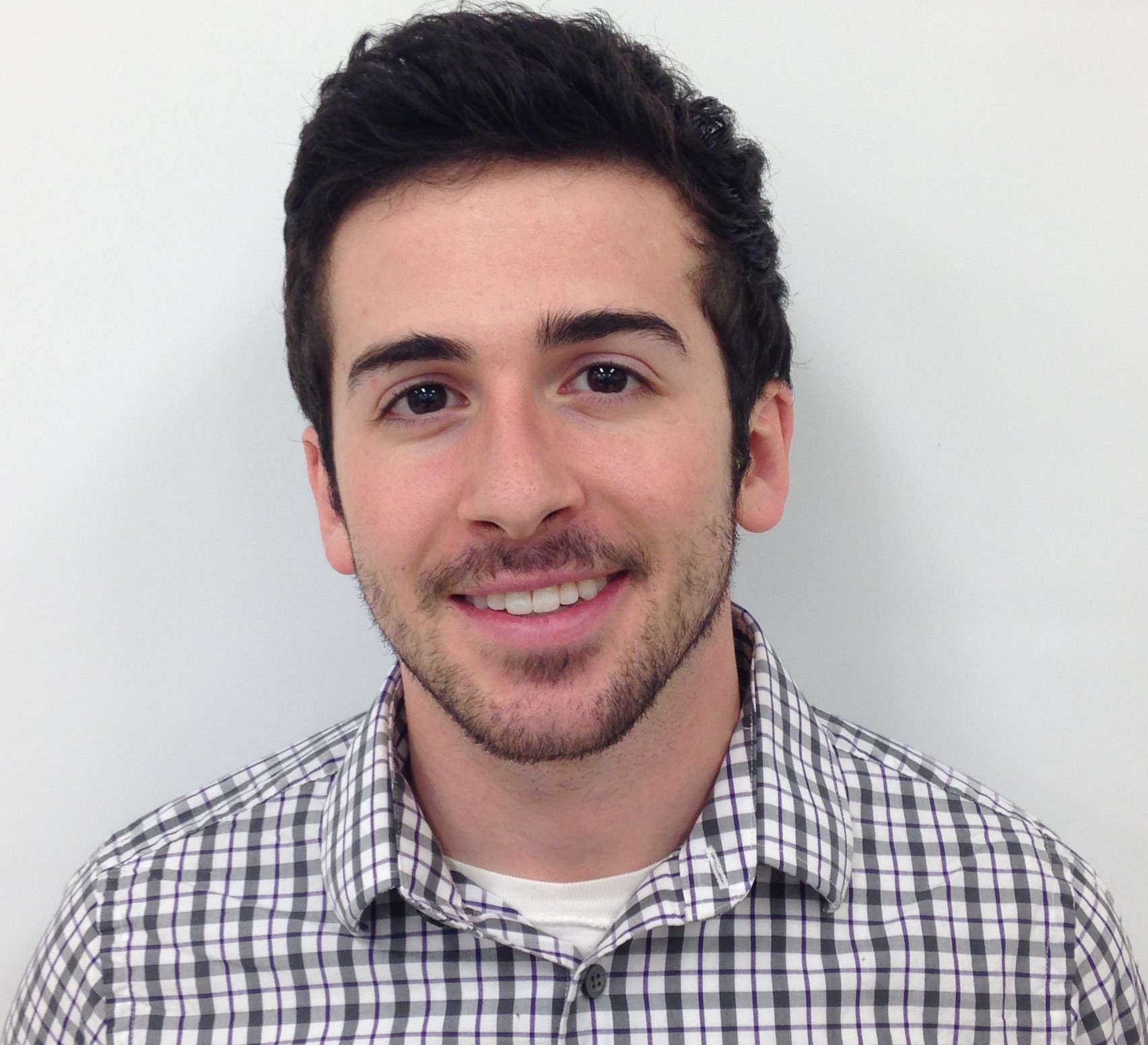 drian F. Howansky, (Ph.D. 2019, Biomedical Engineering, Stony Brook University). “For his invention of new flat panel imagers involving multiple X-ray conversion materials”. Dr. Howansky is currently a medical physics resident in the Department of Radiology
at Stony Borok University Renaissance School of Medicine. He received numerous prestigious
awards in medical imaging during his academic research career as Ph.D. candidate under
the supervision of Dr. Wei Zhao. His research paper published in SPIE Medical Imaging
2017 won him the 1st prize for Robert F. Wagner best student paper award for all conferences,
and the 1st prize for the Physics of Medical Imaging conference. This is the most
prestigious, and highly competitive award given to a graduate student by the SPIE
Medical Imaging conference. The Department of Radiology made an early offer to Dr.
Howansky to become a junior faculty in March 2020. He will be the key member of the
inventor team to realize the “Hybrid Active Matrix Flat panel Imager”, which is included
in an options agreement with Analogic Canada, and presented as part of their future
product roadmap for interventional radiology imaging suite.
drian F. Howansky, (Ph.D. 2019, Biomedical Engineering, Stony Brook University). “For his invention of new flat panel imagers involving multiple X-ray conversion materials”. Dr. Howansky is currently a medical physics resident in the Department of Radiology
at Stony Borok University Renaissance School of Medicine. He received numerous prestigious
awards in medical imaging during his academic research career as Ph.D. candidate under
the supervision of Dr. Wei Zhao. His research paper published in SPIE Medical Imaging
2017 won him the 1st prize for Robert F. Wagner best student paper award for all conferences,
and the 1st prize for the Physics of Medical Imaging conference. This is the most
prestigious, and highly competitive award given to a graduate student by the SPIE
Medical Imaging conference. The Department of Radiology made an early offer to Dr.
Howansky to become a junior faculty in March 2020. He will be the key member of the
inventor team to realize the “Hybrid Active Matrix Flat panel Imager”, which is included
in an options agreement with Analogic Canada, and presented as part of their future
product roadmap for interventional radiology imaging suite.
 Peter Milder, (Ph.D. 2010, Carnegie Mellon University, Postdoctoral Researcher 2010-2012 in Electrical
and Computer Engineering, Carnegie Mellon University). “For his inventions of optimized hardware designs for efficient signal processing and
machine learning”. Dr. Milder is currently an Associate Professor in the Department of Electrical and
Computer Engineering. Dr. Milder studies Automatic hardware generation and optimization
tools; Domain-specific languages for hardware; Field-programmable gate arrays (FPGAs);
Hardware for signal processing, communication systems, computer vision, and other
areas. His research combines aspects of hardware design, FPGAs, compilers, and CAD,
and focuses on applications in machine learning, DSP, and networking. Dr. Milder has
created and maintained the Spiral DFT/FFT IP Core Generator, an online tool to generate flexible hardware implementations of the discrete Fourier
transform suitable for implementation as ASIC or FPGA. Dr. Milder is an accomplished
educator. He has developed three new graduate course (Hardware Architectures for Deep
Learning, Advanced Digital system Design and Generation, and VLSI System Testing),
all with excellent feedback from students. In 2019, he was awarded the CEAS Excellence
in Teaching Award.
Peter Milder, (Ph.D. 2010, Carnegie Mellon University, Postdoctoral Researcher 2010-2012 in Electrical
and Computer Engineering, Carnegie Mellon University). “For his inventions of optimized hardware designs for efficient signal processing and
machine learning”. Dr. Milder is currently an Associate Professor in the Department of Electrical and
Computer Engineering. Dr. Milder studies Automatic hardware generation and optimization
tools; Domain-specific languages for hardware; Field-programmable gate arrays (FPGAs);
Hardware for signal processing, communication systems, computer vision, and other
areas. His research combines aspects of hardware design, FPGAs, compilers, and CAD,
and focuses on applications in machine learning, DSP, and networking. Dr. Milder has
created and maintained the Spiral DFT/FFT IP Core Generator, an online tool to generate flexible hardware implementations of the discrete Fourier
transform suitable for implementation as ASIC or FPGA. Dr. Milder is an accomplished
educator. He has developed three new graduate course (Hardware Architectures for Deep
Learning, Advanced Digital system Design and Generation, and VLSI System Testing),
all with excellent feedback from students. In 2019, he was awarded the CEAS Excellence
in Teaching Award.
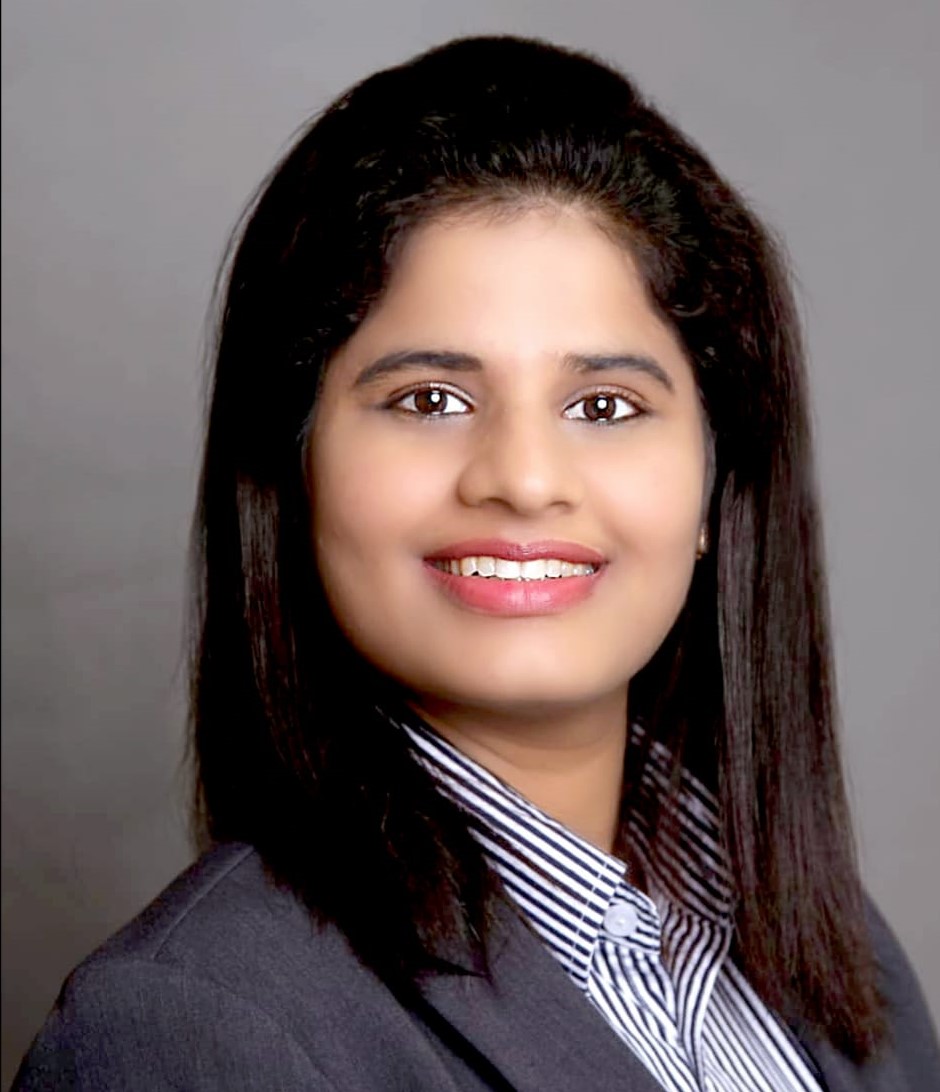 Priyanka Sharma, (Ph.D. 2014, CSIR-National Chemical Laboratory, Pune India. Postdoctoral Researcher,
Department of Chemistry, Stony Brook University) “For her inventions leading to the development of nitro-oxidation method to extract
nanocellulose from raw biomass, which drastically decreases the consumption of energy,
chemicals and water". Dr. Sharma is currently a research scientist in the Department of Chemistry working
in the laboratory group of Professor Benjamin Hsiao. Her work is focused on extraction
of nanocellulose from various plant biomass. Dr. Sharma is a polymer chemist making
breakthroughs in the use of untreated biomass (cellulose) – the most abundant natural
polymer on earth - to sustainably develop carboxy-cellulose nanofibers. Dr. Sharma
has developed a novel, efficient, single step Nitro-oxidation process that no longer
requires pretreatment of the biomass (weeds, grass, and agricultural waste) in the
synthesis of the nanofibers and the byproducts of this nitro oxidation process are
useful and can be converted into plant fertilizers. These nanofibers have been shown
to be quite effective in water purification. They can remove heavy metal ions, dyes
impurities from water and have maximum adsorption capacities that rival the best-reported
adsorbents currently available. Other potential applications include drug delivery,
the development of fuel cell membranes and gas barrier films. Dr. Sharma has an exceptionally
strong background in cellulose chemistry and applies it to develop sustainable technologies
for water purification and energy storage-related applications.
Priyanka Sharma, (Ph.D. 2014, CSIR-National Chemical Laboratory, Pune India. Postdoctoral Researcher,
Department of Chemistry, Stony Brook University) “For her inventions leading to the development of nitro-oxidation method to extract
nanocellulose from raw biomass, which drastically decreases the consumption of energy,
chemicals and water". Dr. Sharma is currently a research scientist in the Department of Chemistry working
in the laboratory group of Professor Benjamin Hsiao. Her work is focused on extraction
of nanocellulose from various plant biomass. Dr. Sharma is a polymer chemist making
breakthroughs in the use of untreated biomass (cellulose) – the most abundant natural
polymer on earth - to sustainably develop carboxy-cellulose nanofibers. Dr. Sharma
has developed a novel, efficient, single step Nitro-oxidation process that no longer
requires pretreatment of the biomass (weeds, grass, and agricultural waste) in the
synthesis of the nanofibers and the byproducts of this nitro oxidation process are
useful and can be converted into plant fertilizers. These nanofibers have been shown
to be quite effective in water purification. They can remove heavy metal ions, dyes
impurities from water and have maximum adsorption capacities that rival the best-reported
adsorbents currently available. Other potential applications include drug delivery,
the development of fuel cell membranes and gas barrier films. Dr. Sharma has an exceptionally
strong background in cellulose chemistry and applies it to develop sustainable technologies
for water purification and energy storage-related applications.
 Michael Ferdman, (Ph.D 2012, Carnegie Mellon University, Electrical and Computer Engineering, Research
Assistant 2008-2012, Ecole Polytechnique Fédérale de Lausanne, Switzerland). "For his inventions on the hardware accelerators for deep learning and the system
design for servers and memories". Dr. Ferdman is currently an Associate Professor in the Department of Computer Science.
I He is the Co-Director of the Computer Architecture Stony Brook (COMPAS). Dr. Ferdman’s research interests are in the area of computer architecture, with
emphasis on the design of server systems. He works on the entire computing stack,
from server software and operating systems, to networks and processor microarchitecture.
His current research projects include FPGA accelerator integration into server environments
(e.g., Intel HARP, Microsoft Catapult, and Amazon F1), FPGA programmability (e.g.,
virtual memory and high-level synthesis), accelerators for machine learning (e.g.,
convolutional neural networks), efficient network processing and software-defined
networking, speculative performance and energy-enhancing techniques for high-performance
processors, and programming models and mechanisms for emerging memory technologies
(e.g., HBM and 3D XPoint). Dr. Ferdman is a rising star in the computer architecture
community with an extraordinary publication record. Many of his papers appeared in
top computer science conferences such as ISCA, Micro, HPCA, ASPLOS, and received multiple
best paper awards and other similar recognitions.
Michael Ferdman, (Ph.D 2012, Carnegie Mellon University, Electrical and Computer Engineering, Research
Assistant 2008-2012, Ecole Polytechnique Fédérale de Lausanne, Switzerland). "For his inventions on the hardware accelerators for deep learning and the system
design for servers and memories". Dr. Ferdman is currently an Associate Professor in the Department of Computer Science.
I He is the Co-Director of the Computer Architecture Stony Brook (COMPAS). Dr. Ferdman’s research interests are in the area of computer architecture, with
emphasis on the design of server systems. He works on the entire computing stack,
from server software and operating systems, to networks and processor microarchitecture.
His current research projects include FPGA accelerator integration into server environments
(e.g., Intel HARP, Microsoft Catapult, and Amazon F1), FPGA programmability (e.g.,
virtual memory and high-level synthesis), accelerators for machine learning (e.g.,
convolutional neural networks), efficient network processing and software-defined
networking, speculative performance and energy-enhancing techniques for high-performance
processors, and programming models and mechanisms for emerging memory technologies
(e.g., HBM and 3D XPoint). Dr. Ferdman is a rising star in the computer architecture
community with an extraordinary publication record. Many of his papers appeared in
top computer science conferences such as ISCA, Micro, HPCA, ASPLOS, and received multiple
best paper awards and other similar recognitions.
2019
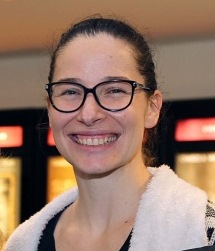 Eszter Boros, (Ph.D. 2011, Chemistry, University of British Columbia, Canada. Postdoctoral fellow,
Department of Radiology, 2011-2015 and Instructor in Radiology, 2015-2017, Harvard
Medical School/ Massachusetts General Hospital). For her inventions of triazamacrocycle-derived chelators for the coordination of imaging and therapy metal ions. Dr. Boros is currently an Assistant Professor, Department of Chemistry at Stony Brook
University. She joined the Department in 2017. Dr. Boros' research program in "Medicinal Inorganic Chemistry" harnesses the rich
structural diversity of metal complexes paired with their versatile luminescent and radioactive
properties for the design of new metal-based molecular imaging probes and therapeutics
for personalized medicine. She is currently developing probes for the following applications:
(i) Imaging and treatment of bacterial infections with siderophores; (ii) Metal-based
probes for the multimodal imaging of cancer; (iii) Immuno-PET probes for the imaging
of pulmonary fibrosis.
Eszter Boros, (Ph.D. 2011, Chemistry, University of British Columbia, Canada. Postdoctoral fellow,
Department of Radiology, 2011-2015 and Instructor in Radiology, 2015-2017, Harvard
Medical School/ Massachusetts General Hospital). For her inventions of triazamacrocycle-derived chelators for the coordination of imaging and therapy metal ions. Dr. Boros is currently an Assistant Professor, Department of Chemistry at Stony Brook
University. She joined the Department in 2017. Dr. Boros' research program in "Medicinal Inorganic Chemistry" harnesses the rich
structural diversity of metal complexes paired with their versatile luminescent and radioactive
properties for the design of new metal-based molecular imaging probes and therapeutics
for personalized medicine. She is currently developing probes for the following applications:
(i) Imaging and treatment of bacterial infections with siderophores; (ii) Metal-based
probes for the multimodal imaging of cancer; (iii) Immuno-PET probes for the imaging
of pulmonary fibrosis.
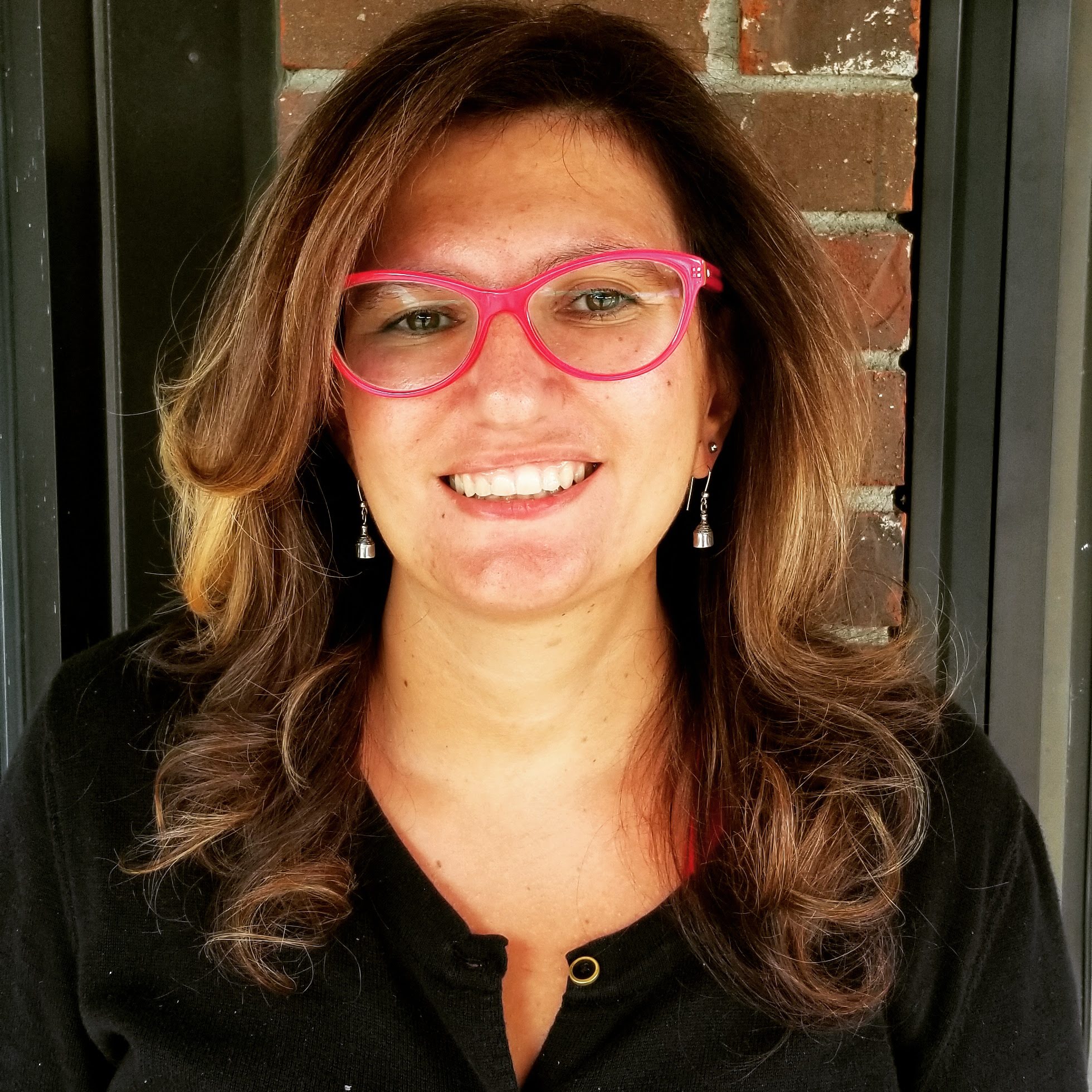 Cristina Lazzarini, (Ph.D. 2014, Medical Mycology, University of Milan, Italy). For her innovative development of novel antifungal compounds. Dr. Lazzarini is currently a Postdoctoral Research Associate in the Department of
Molecular Genetics and Microbiology working in the laboratory group of Professor Maurizio
Del Poeta, Stony Brook University School of Medicine. Dr. Lazzarini's area of expertise
is in infectious diseases with particular focus on mycological diseases. Currently,
she is working on the role on fungal lipids in pathobiology of Cryptococcus neoformans. Also, she is working on developing a new drug that can affect the fungal lipids pathway.
Finding a new drug is very important since the last drug put on the market against
fungi was approved 20 years ago. She is working on finding new methods that help detecte
particular strains of Candida, epidemiological studies on patient’s population, detection of resistant strains
through laboratory accredited techniques and developing of new antifungal drugs.
Cristina Lazzarini, (Ph.D. 2014, Medical Mycology, University of Milan, Italy). For her innovative development of novel antifungal compounds. Dr. Lazzarini is currently a Postdoctoral Research Associate in the Department of
Molecular Genetics and Microbiology working in the laboratory group of Professor Maurizio
Del Poeta, Stony Brook University School of Medicine. Dr. Lazzarini's area of expertise
is in infectious diseases with particular focus on mycological diseases. Currently,
she is working on the role on fungal lipids in pathobiology of Cryptococcus neoformans. Also, she is working on developing a new drug that can affect the fungal lipids pathway.
Finding a new drug is very important since the last drug put on the market against
fungi was approved 20 years ago. She is working on finding new methods that help detecte
particular strains of Candida, epidemiological studies on patient’s population, detection of resistant strains
through laboratory accredited techniques and developing of new antifungal drugs.
 Krupanandan Haranahalli, (Ph.D. 2016, Chemistry, Stony Brook University). For her invention of a new class of highly potent antifungal compounds. Dr. Haranahalli is currently a Postdoctoral Research Associate in the Department of Chemistry
and ICB&DD in the laboratory group of Professor Iwao Ojima at Stony Brook University.
Dr. Haranahalli is an organic chemist with an area of expertise in medicinal chemistry.
She has extensive experience in design, synthesis and characterization of novel small
molecules, polymer-assisted solution phase combinatorial library syntheses, SAR studies
to identify hit to lead compounds. She is currently working on the design and synthesis
of a novel acylhydrazones as inhibitors of fungal sphingolipid synthesis.
Krupanandan Haranahalli, (Ph.D. 2016, Chemistry, Stony Brook University). For her invention of a new class of highly potent antifungal compounds. Dr. Haranahalli is currently a Postdoctoral Research Associate in the Department of Chemistry
and ICB&DD in the laboratory group of Professor Iwao Ojima at Stony Brook University.
Dr. Haranahalli is an organic chemist with an area of expertise in medicinal chemistry.
She has extensive experience in design, synthesis and characterization of novel small
molecules, polymer-assisted solution phase combinatorial library syntheses, SAR studies
to identify hit to lead compounds. She is currently working on the design and synthesis
of a novel acylhydrazones as inhibitors of fungal sphingolipid synthesis.
2018
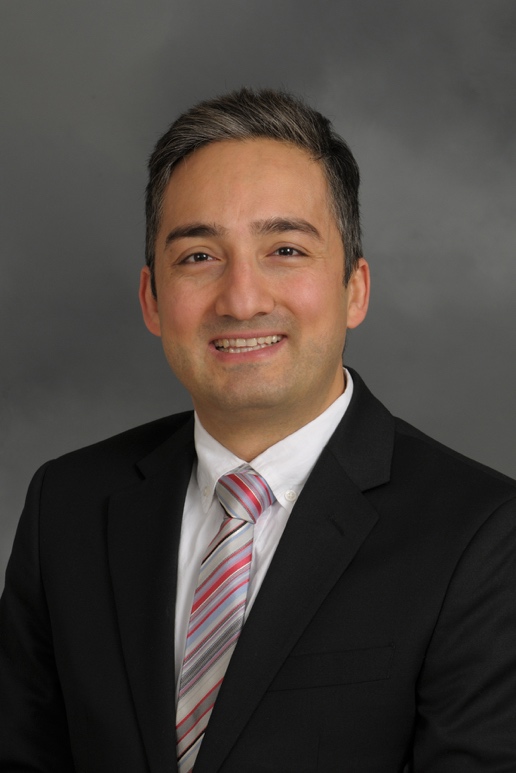 Amirhossein Goldan, (Ph.D. 2011, Electrical and Computer Engineering, University of Waterloo, Canada;
Postdoctoral Research, Natural Sciences and Eng. Research Council of Canada, 2014-2016). For his innovative development and fabrication of medical imaging detectors for positron
emission tomography (PET) and digital mammography. Dr. Amirhossein Goldanis currently a Research Assistant Professor of Radiology at
Stony Brook University School of Medicine. Dr. Goldan is working on the development
and fabrication of medical imaging detectors for positron emission tomography (PET)
and digital mammography. He received his. B.A.S.(2005) and M.A.S.(2007) degree in
electrical engineering from Simon Fraser University, Vancouver, BC, Canada, Ph.D.
(2011) in electrical and computer engineering from the University of Waterloo, Canada.
Dr. Goldan has extensive experience in amorphous selenium (a-Se) devices and has co-invented,
developed and fabricated a number of different direct and indirect detector technologies.
He has successfully built the first a-Se UTD detector using the patented field-shaping
multi-well technology and demonstrated more than two orders-of-magnitude improvement
in temporal performance.
Amirhossein Goldan, (Ph.D. 2011, Electrical and Computer Engineering, University of Waterloo, Canada;
Postdoctoral Research, Natural Sciences and Eng. Research Council of Canada, 2014-2016). For his innovative development and fabrication of medical imaging detectors for positron
emission tomography (PET) and digital mammography. Dr. Amirhossein Goldanis currently a Research Assistant Professor of Radiology at
Stony Brook University School of Medicine. Dr. Goldan is working on the development
and fabrication of medical imaging detectors for positron emission tomography (PET)
and digital mammography. He received his. B.A.S.(2005) and M.A.S.(2007) degree in
electrical engineering from Simon Fraser University, Vancouver, BC, Canada, Ph.D.
(2011) in electrical and computer engineering from the University of Waterloo, Canada.
Dr. Goldan has extensive experience in amorphous selenium (a-Se) devices and has co-invented,
developed and fabricated a number of different direct and indirect detector technologies.
He has successfully built the first a-Se UTD detector using the patented field-shaping
multi-well technology and demonstrated more than two orders-of-magnitude improvement
in temporal performance.
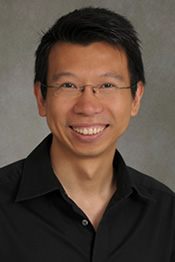 Ming-Yu Ngai, (Ph.D. 2008, Chemistry, Univ. of Texas, Austin; Postdoctoral Research, Stanford Univ.
2009-2011; Harvard Univ. 2011-2013) For his inventions of highly efficient synthetic methods for pharmaceuticals and agrochemicals,
as well as radiopharmaceuticals for PET imaging. Dr. Ngai is an Assistant Professor in the Department of Chemistry. Dr. Ngai’s research
focuses on developing novel and practical synthetic methodologies to address unmet
challenges in organic synthesis and medicinal chemistry, and (ii) identifying and
developing new radiotracers for Positron Emission Tomography (PET) imaging to elucidate
disease mechanisms, identify drug targets, assess treatment efficacy, and accelerate
drug discovery and development. Dr. Ngai’s research interests are multidisciplinary,
covering organic and organometallic chemistry, photochemistry, radiochemistry, and
biomedical imaging. Dr. Ngai received his Ph.D. (2008) in Chemistry from University
of Texas, Austin. He was awarded a Croucher Foundation Postdoctoral Research Fellowship
at Stanford University and worked in the laboratory of Professor Barry M. Trost (2009-2011).
He also performed postdoctoral research at Harvard University in the laboratory of
Professor Tobias Ritter (2011-2013). Dr. Ngai has an exceptionally strong background
in chemical synthesis and applies it to molecular imaging for diagnosis and therapy.
Ming-Yu Ngai, (Ph.D. 2008, Chemistry, Univ. of Texas, Austin; Postdoctoral Research, Stanford Univ.
2009-2011; Harvard Univ. 2011-2013) For his inventions of highly efficient synthetic methods for pharmaceuticals and agrochemicals,
as well as radiopharmaceuticals for PET imaging. Dr. Ngai is an Assistant Professor in the Department of Chemistry. Dr. Ngai’s research
focuses on developing novel and practical synthetic methodologies to address unmet
challenges in organic synthesis and medicinal chemistry, and (ii) identifying and
developing new radiotracers for Positron Emission Tomography (PET) imaging to elucidate
disease mechanisms, identify drug targets, assess treatment efficacy, and accelerate
drug discovery and development. Dr. Ngai’s research interests are multidisciplinary,
covering organic and organometallic chemistry, photochemistry, radiochemistry, and
biomedical imaging. Dr. Ngai received his Ph.D. (2008) in Chemistry from University
of Texas, Austin. He was awarded a Croucher Foundation Postdoctoral Research Fellowship
at Stanford University and worked in the laboratory of Professor Barry M. Trost (2009-2011).
He also performed postdoctoral research at Harvard University in the laboratory of
Professor Tobias Ritter (2011-2013). Dr. Ngai has an exceptionally strong background
in chemical synthesis and applies it to molecular imaging for diagnosis and therapy.
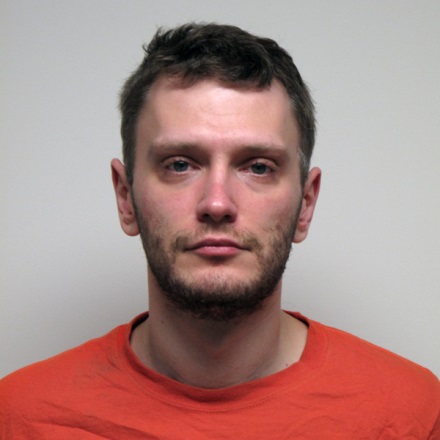 Dmytro Gudkov, (Ph.D. 2013, Electrical Engineering, Stony Brook University.) For his innovative design and development of ultra-sensitive single and multi-channel
fluorescent detectors for application in the field of life sciences. Dr. Dmytro Gudkov is a Research Scientist in the Department of Electrical Engineering
at Stony Brook University. He received his B.S. (2004) in electrical engineering
from the Kharkov National University of Radio Electronics in Kharkov, Ukraine, M.S.
(2011) and Ph.D. (2013) in electrical engineering from Stony Brook University. Dr.
Gudkov developed a novel circuit for detecting single photons with high efficiency.
His innovative design and development concerns with the development of ultra-sensitive
single and multi-channel fluorescent detectors for application in the field of life
sciences.
Dmytro Gudkov, (Ph.D. 2013, Electrical Engineering, Stony Brook University.) For his innovative design and development of ultra-sensitive single and multi-channel
fluorescent detectors for application in the field of life sciences. Dr. Dmytro Gudkov is a Research Scientist in the Department of Electrical Engineering
at Stony Brook University. He received his B.S. (2004) in electrical engineering
from the Kharkov National University of Radio Electronics in Kharkov, Ukraine, M.S.
(2011) and Ph.D. (2013) in electrical engineering from Stony Brook University. Dr.
Gudkov developed a novel circuit for detecting single photons with high efficiency.
His innovative design and development concerns with the development of ultra-sensitive
single and multi-channel fluorescent detectors for application in the field of life
sciences.
2017
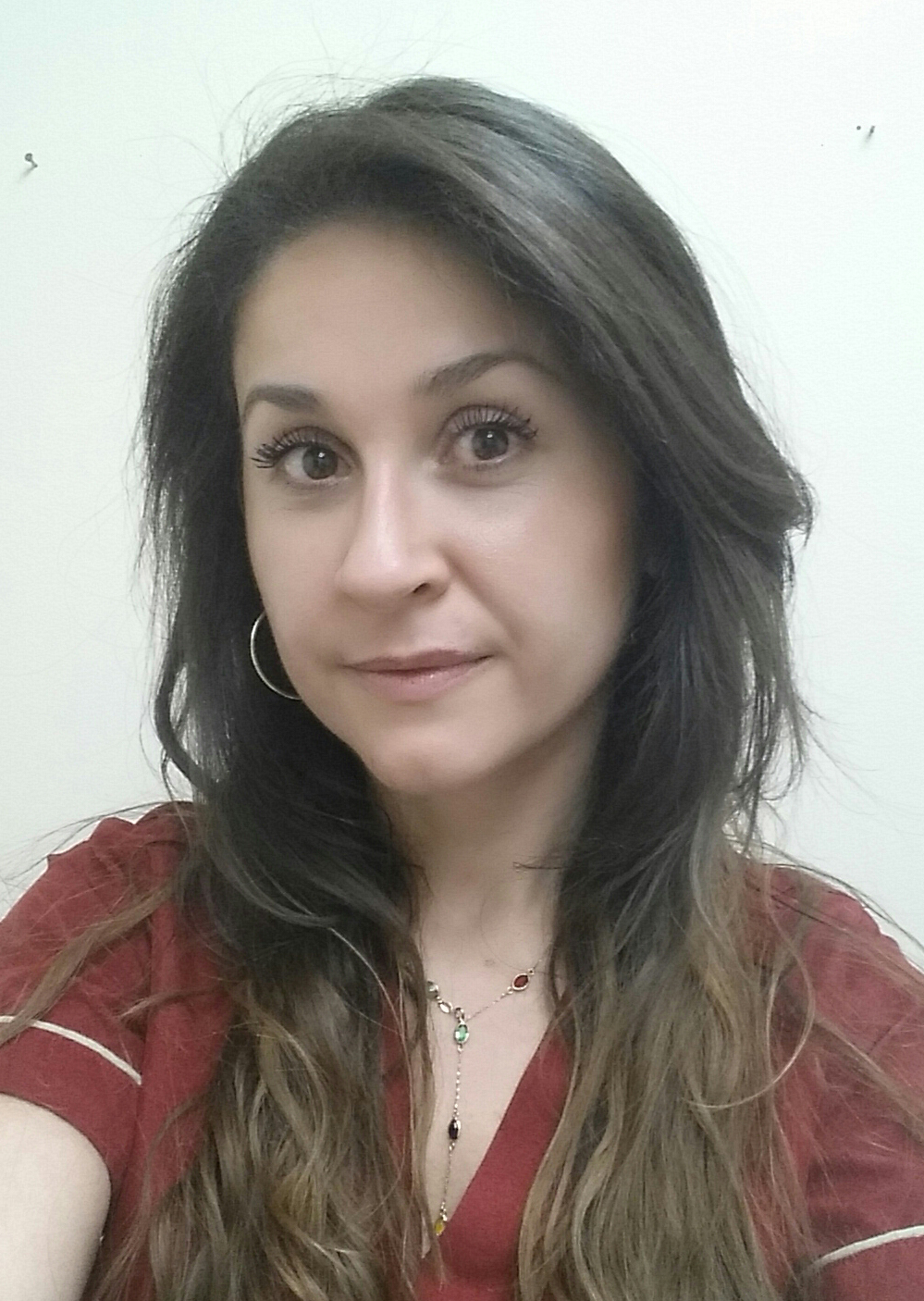 Dr. Luisa Escobar-Hoyos, (Ph.D. 2015, Molecular and Cellular Pharmacology, Stony Brook Univ.; Postdoctoral
Research, Memorial Sloan-Kettering Cancer Center) For her discovery and Inventions on “Keratin 17 as a prognostic and predictive marker of cancer and cancer Treatment”. Dr. Escobar-Hoyos is an Assistant Professor in the Department of Pathology, Stony
Brook School of Medicine. She received her B.Sc. (2007) in biology from Pontifica
Universidad Javeriana, Bogota, Colombia and M.Sc. (2010) in biomedical sciences from
Universidad del Valle, Cali, Colombia and Ph.D. (2015), in Molecular and Cellular
Pharmacology from Stony Brook University. She performed postdoctoral research at Memorial
Sloan-Kettering Cancer Center. Dr. Escobar-Hoyos received the Stony Brook University
President’s Award for Distinguished Doctoral Student. She was named the 2017 recipient
of the Pancreatic Cancer Action Network AACR Pathway to Leadership Award.
Dr. Luisa Escobar-Hoyos, (Ph.D. 2015, Molecular and Cellular Pharmacology, Stony Brook Univ.; Postdoctoral
Research, Memorial Sloan-Kettering Cancer Center) For her discovery and Inventions on “Keratin 17 as a prognostic and predictive marker of cancer and cancer Treatment”. Dr. Escobar-Hoyos is an Assistant Professor in the Department of Pathology, Stony
Brook School of Medicine. She received her B.Sc. (2007) in biology from Pontifica
Universidad Javeriana, Bogota, Colombia and M.Sc. (2010) in biomedical sciences from
Universidad del Valle, Cali, Colombia and Ph.D. (2015), in Molecular and Cellular
Pharmacology from Stony Brook University. She performed postdoctoral research at Memorial
Sloan-Kettering Cancer Center. Dr. Escobar-Hoyos received the Stony Brook University
President’s Award for Distinguished Doctoral Student. She was named the 2017 recipient
of the Pancreatic Cancer Action Network AACR Pathway to Leadership Award.
 Dr. Martin Kaczocha, (Ph.D. 2009 Biochemistry and Molecular Biology, Stony Brook Univ.; Postdoctoral Research,
Stony Brook University). For his discovery and inventions on “Fatty acid binding proteins as drug targets for pain control through modulation of endocannabinoid metabolism”. Dr. Martin Kaczocha is an Assistant Professor in the Departments of Anesthesiology;
Biochemistry and Cell Biology at Stony Brook University School of Medicine. He received
his B.Sc. (2004) in pharmacology (with honors) and Ph.D. (2009) in biochemistry and
molecular biology from Stony Brook University. He performed postdoctoral research
in Biochemistry at Stony Brook University. He is currently the recipient of two principal
investigator awards from The National Institute of Drug Abuse. (2013-2018 and 2014-2018).
Dr. Martin Kaczocha, (Ph.D. 2009 Biochemistry and Molecular Biology, Stony Brook Univ.; Postdoctoral Research,
Stony Brook University). For his discovery and inventions on “Fatty acid binding proteins as drug targets for pain control through modulation of endocannabinoid metabolism”. Dr. Martin Kaczocha is an Assistant Professor in the Departments of Anesthesiology;
Biochemistry and Cell Biology at Stony Brook University School of Medicine. He received
his B.Sc. (2004) in pharmacology (with honors) and Ph.D. (2009) in biochemistry and
molecular biology from Stony Brook University. He performed postdoctoral research
in Biochemistry at Stony Brook University. He is currently the recipient of two principal
investigator awards from The National Institute of Drug Abuse. (2013-2018 and 2014-2018).
 Dr. Joseph Marino, (Ph.D. 2012, Department of Computer Science, Stony Brook University). For his inventions on “System and method for improving diagnostics in medical imaging applications through the use of novel and enhanced visualization techniques”. Dr. Joseph Marino is a Postdoctoral Research Associate under the mentorship of Dr.
Arie Kaufman in the Department of Computer Science at Stony Brook University. He
is also the Chief Technology Officer of Zortag, Inc. in Great Neck, New York. He received
his B.Sc. (2006) in computer sciences and applied mathematics and statistics (with
honors) and Ph.D. (2012) in computer sciences from Stony Brook University. Dr. Marino
is the Long Island Technology Hall of Fame Patent Award Winner of 2016.
Dr. Joseph Marino, (Ph.D. 2012, Department of Computer Science, Stony Brook University). For his inventions on “System and method for improving diagnostics in medical imaging applications through the use of novel and enhanced visualization techniques”. Dr. Joseph Marino is a Postdoctoral Research Associate under the mentorship of Dr.
Arie Kaufman in the Department of Computer Science at Stony Brook University. He
is also the Chief Technology Officer of Zortag, Inc. in Great Neck, New York. He received
his B.Sc. (2006) in computer sciences and applied mathematics and statistics (with
honors) and Ph.D. (2012) in computer sciences from Stony Brook University. Dr. Marino
is the Long Island Technology Hall of Fame Patent Award Winner of 2016.
